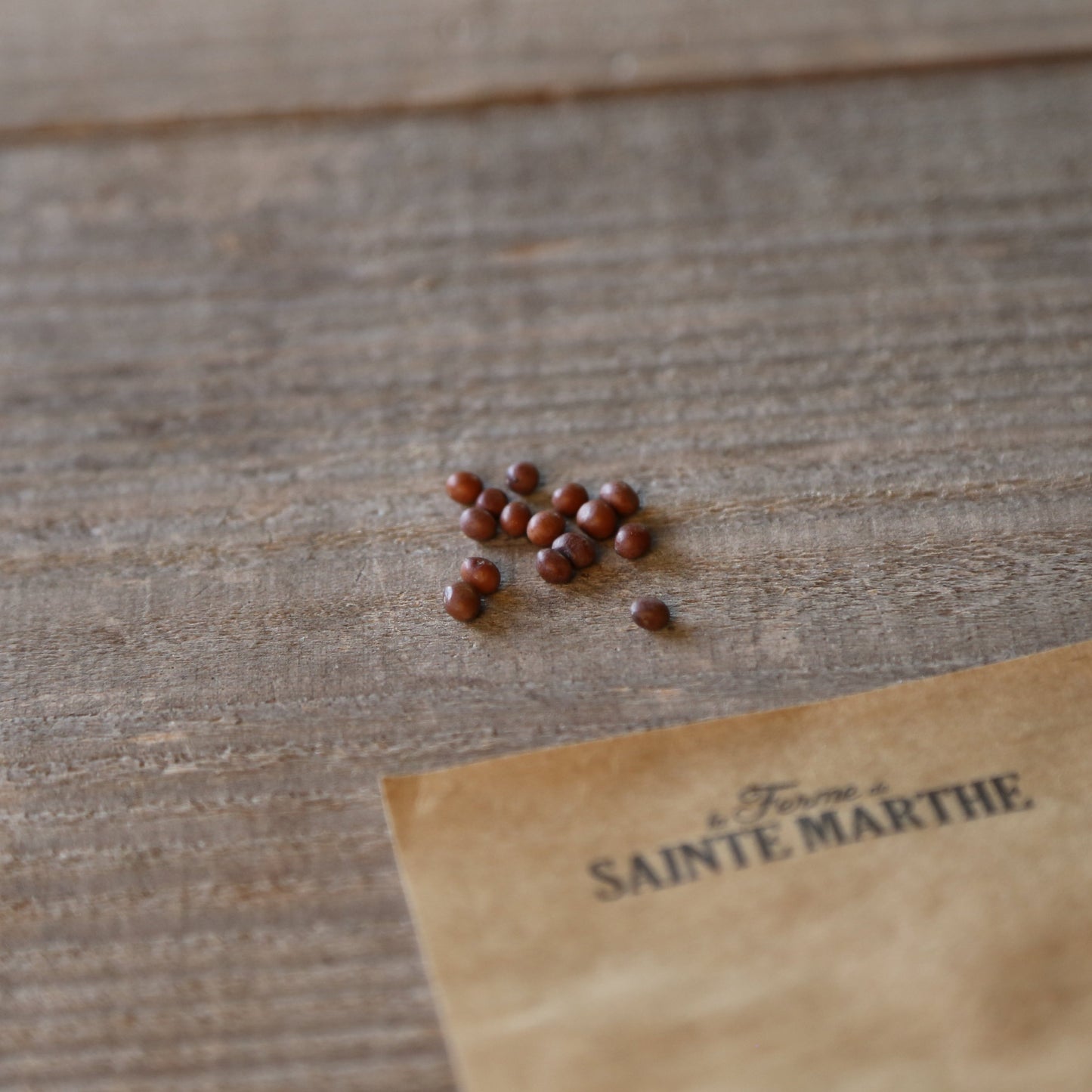ASPARAGUS PEAS AB
Tetragonolobus purpureus
Cultivated since the 16th century, the asparagus pea or purple trefoil is a very decorative plant due to its deep red flowers but also cultivated for its winged pods, harvested after they reach 2 to 3 cm, eaten like snow peas.
You can also eat the square peas contained in the asparagus pods, which you let grow longer like shelling peas. Their "fresh" flavor is a cross between snow peas and asparagus.
Flowers can be used to decorate dishes. Peas such as grass peas or chickpeas should be eaten in moderation.
Successful sowing of asparagus peas
Sowing: from April to May when frost is no longer a risk and the soil is warm.
Sow 6 to 7 seeds in pockets arranged in a staggered pattern every 50 cm in healthy, loosened, fresh, light, humus-rich soil in a warm, sunny location. Space the rows 70 cm apart, with a maximum of 2 to 3 rows per bed.
Keep only the most vigorous plants. Hoeing and watering.
Keep the soil moist by regular watering and good mulching.
Good associations
Asparagus peas will enjoy the company of carrots, beets, lettuce, tomatoes or strawberries.
Avoid putting them near onions, shallots or garlic.
Harvest
Winged pods are generally harvested 3 months after sowing when they are 2 to 3 cm long before the seeds form in the pod. If you leave your pods too long they will become stringy.
Conservation
You can store your asparagus peas like beans in jars or in the freezer.
How to cook asparagus peas?
Asparagus peas are cooked like green beans, steamed or boiled.
The enemies
Beware of slugs and snails. Place a barrier around your crop.









